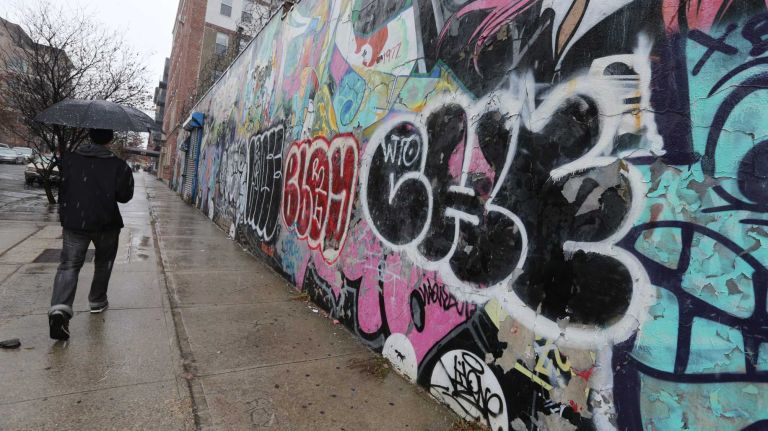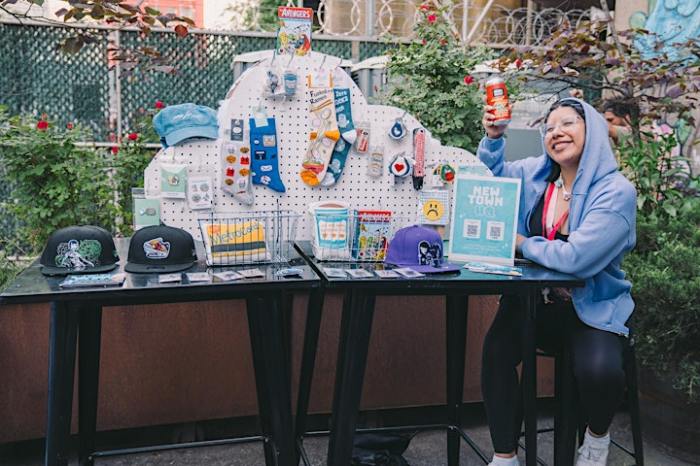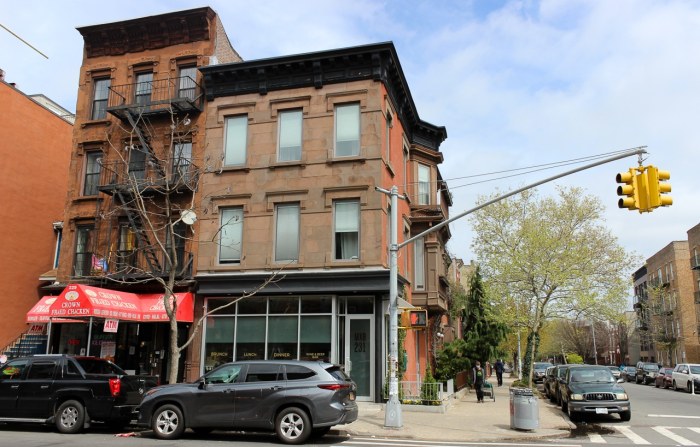
From amateurish scribbles to elaborate murals, graffiti has for decades transformed the city into a giant outdoor art gallery. And there’s no sign of it fading.
Graffiti complaints were up 16% for the 12-month period between Nov. 1, 2013 and Oct. 31, 2014, according to an analysis of 311 data by amNewYork. There were 15,539 complaints compared to 13,366 in the previous 12-month period.
ZIP codes with the highest number of complaints in the current period — 400 or more — included neighborhoods like the Lower East Side, Williamsburg and Sunset Park.
Other ZIP Codes with more than 300 complaints included neighborhoods like Greenpoint, East New York and Cypress Hills.
City officials declined to speculate as to why the numbers were up, saying it was impossible to tell whether there was simply more awareness of how to file complaints or more graffiti. But those who follow street art trends closely had a basic explanation for the popularity of neighborhoods like Williamsburg and the Lower East Side for graffiti artists: visibility.
“These places are really good places to promote,” said Sotero “BG183” Ortiz, a member of the famed band of graffiti mural artists known as Tats Cru.
He said there are a number of galleries, especially in Williamsburg and the Lower East Side, that have been known to pluck street artists from obscurity and show their works, which can mean both fame and money. “People sell their graffiti paintings for thousands of dollars,” Ortiz said.
Sacha Jenkins, who is teaching a course in graffiti to graphic design students at Pratt Institute, agreed.
“In these areas that you’ve outlined that are hot spots you have hipsters who want to be artists,” said Jenkins, who is the creative director of Mass Appeal, a pop culure site that began as a grafitti zine. “They are advertising their products to people like them. It’s not like they’re going to the South Bronx doing their graffiti.”
An analysis of four years of available 311 data showed that the numbers of complaints had dipped during that period from a high of 16,498 complaints in the period between Nov. 1, 2011 and Oct. 31, 2012.
Talk to people in some of the neighborhoods with the most graffiti complaints, and you get mixed responses.
Art student Kristen Stark, 22, and English major Steffani Daniello, 24, were walking past a mural on Bedford Avenue when they were asked recently what they thought about the graffiti in Williamsburg.
“I think it’s fun, colorful, and expressive. It’s an art form, just like traditional paintings and drawings, and it has lots of meaning, just like any traditional art form,” Stark said. “It isn’t vandalism, it’s just someone expressing themselves, putting their work out there.”
Daniello agreed. “I enjoy walking around my neighborhood and seeing these really colorful, brilliant pieces,” she said. “It’s like living in an art installation, and I love to see what’s new.”
But Eileen Chrystie, 50, a former teacher who was at a nearby coffee shop, didn’t have much love for the graffiti in the neighborhood.
“To me, it makes me feel as if the buildings are dirty and I don’t think it’s adding beauty to the neighborhood. It’s doing the opposite; it doesn’t make me feel at peace,” she said. “Some graffiti, I’ll admit, is artistic, but lots of graffiti contains vulgar messages and swearwords that can be disturbing to children.”
Modern graffiti is a quintessentially American form of expression that emerged in the 1970s alongside hip-hop culture in New York City. With little but cans of aerosolized paint, urban kids were able to communicate with each other by “tagging” their names on walls and subway trains. Graffiti soon evolved into a street art with more complex wall-sized murals. By the 1980s, artists like Jean Michel-Basquiat and Keith Haring were appropriating graffiti techniques in their works, and graffiti was going global, spurred by depictions in movies and on television.
Today,artists like Banksy reap tens of thousands of dollars from their pieces or make a living working for companies like Coke, doing mural-sized ads on buildings in urban markets. Recognition-seeking aspiring graffiti artists post their latest works on Instagram and Twitter.
Of course, not everyone is in love with graffiti or embraces it as art. And for decades the city has tried to balance respect of freedom of expression and property rights in dealing with what many consider urban blight.
The police investigate and arrest graffiti artists through its Vandal Squad; it even maintains a database of so-called street vandals. The NYPD won’t say how many officers are assigned to the squad. The department was unable to provide arrest figures for the current year by press time.
The city’s Economic Development Corp. also provides free removal of graffiti through its Graffiti-Free NYC program. With a fleet of 22 vans, 35 employees and a roughly $2.5 million budget, the program responds to 311 complaints , routing requests based on proximity using GIS mapping software.
There are two ways that they go about dealing with graffiti: by painting it over with a color that matches the underlying surface; or, on exposed bricks and brownstones, by applying a light concentration of a chemical mixture and power-washing the graffiti off.
Andrew Mainardi, an assistant vice president with the New York City Economic Development Corp., one of the people who oversee the Graffiti-Free NYC program, said that they maintain maps of chronic graffiti sites.
He said, “From a long-term standpoint it isn’t cost effective to go to the same property just to remove graffiti.”
Instead, he said they were looking into “creative solutions to keep people from retagging” including encouraging street art, which often refers to elaborate murals created by established artists. “Something that was done with care or time, something that was done lawfully” — and with the permission of the property owner, Mainardi said.
To be clear, the city has no formal program to encourage street art — it’s simply one innovative idea that is under consideration.
“There are areas of Brooklyn where there are beautiful murals where there is no graffiti,” Mainiardi said.
Another hot spot for graffiti was Sunset Park, and a stretch of Eighth Avenue between 40th and 60th streets was among the hardest-hit in recent months.
Storeowners on Eighth Avenue were less than enthusiastic about the tagging.
At Fortune Prize Grocery, Patrick Chen said that his rolling storefront gate had been tagged a year ago. He said the city removed the paint by March. He said he sees similar graffiti at a lot of stores and has gotten used to seeing it. But that doesn’t mean he likes it.
“The way they draw is ugly. There’s no art,” he said. “They just want to have fun.”
(With Sarah Allam)


















